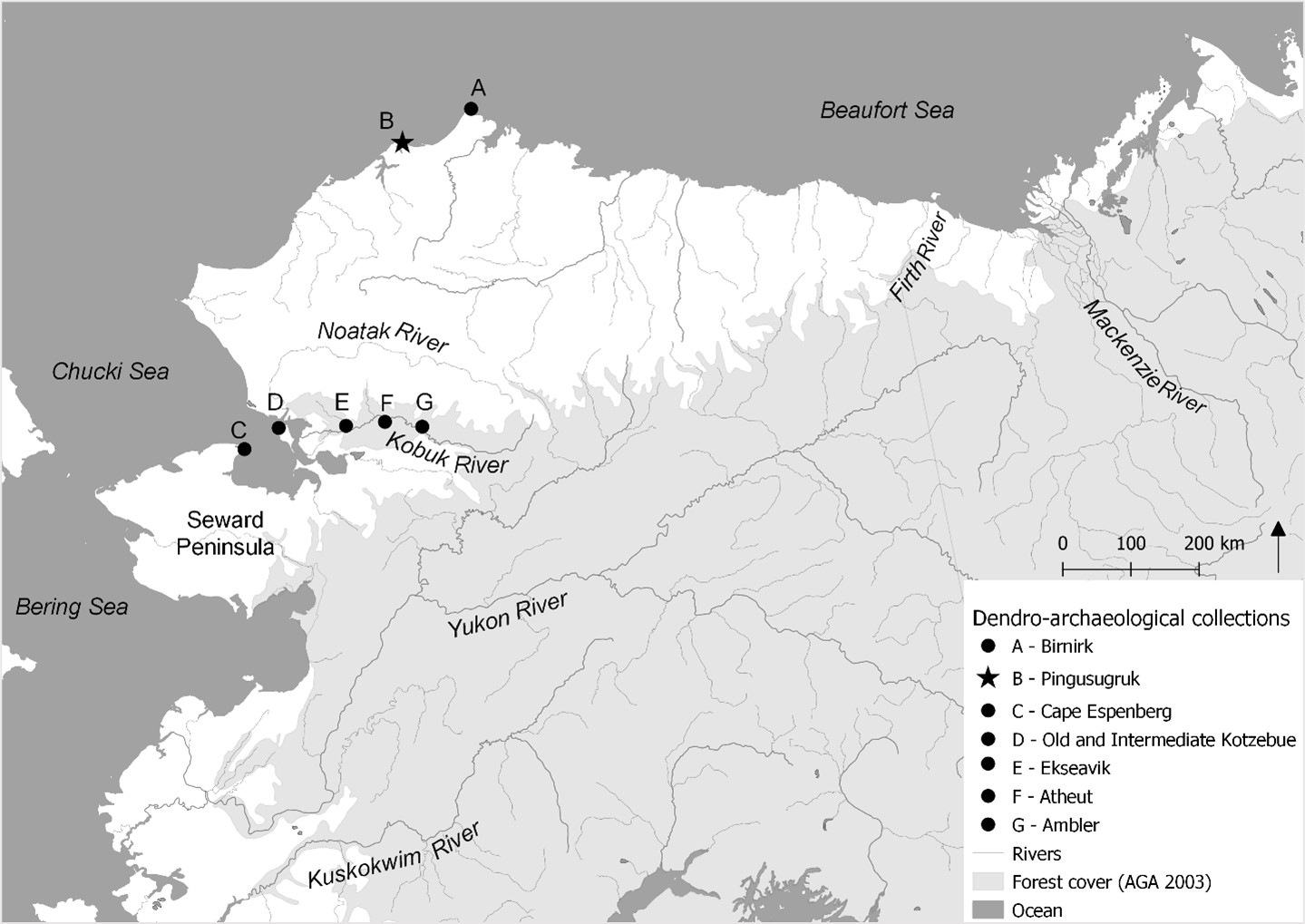Along the coasts of northern Alaska, in a treeless tundra environment, the primary wood resource for coastal populations is driftwood, a seasonal and exogenous resource carried by the major rivers of western North America. The potential of Alaskan coastal archaeological wood for tree-ring research was first assessed in the 1940s by archaeologist and tree-ring research pioneer J. L. Giddings (Figure 1). Despite his success, the difficulties of dendrochronological studies on driftwood and the development of radiocarbon dating during the 1950s resulted in the near-abandonment of dendrochronology to precisely date archaeological sites and build long sequences using archaeological wood in Alaska. In this study, we explored the possibilities and limitations of standard ring-width dendrochronological methods for dating Alaskan coastal archaeological wood. We focus on the site of Pingusugruk, a late Thule site (15th–17th CE) located at Point Franklin, northern Alaska. The preliminary results have been obtained from the standard dendrochronological analyses of 40 timber cross-sections from two semi-subterranean houses at Pingusugruk (Figure 2). We cross-correlated individual ring-width series and built floating chronologies between houses before cross-dating them with existing regional 1000-year-long master chronologies from the Kobuk and Mackenzie rivers (available on the International Tree-Ring Databank, ITRDB). These preliminary results confirm the potential of dendrochronology for a better understanding of the Thule period on climate and cultural change. Additional work on various dendro-archaeological collections using an interdisciplinary approach (geochemical analyses of oxygen isotopes and radiocarbon dating) will help develop and expand regional tree-ring chronologies and climatic tree-ring sequences in Alaska.
Référence : Taïeb J., Alix C., Juday G.P., Jensen A. M., Daux V. Dating coastal archaeological wood from Pingusugruk (15th-17th CE), Northern Alaska. International Journal of wood culture 2, 1-28.









